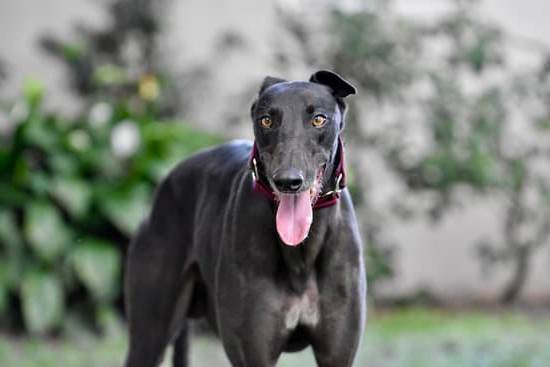Potty training is a vital aspect of a dog’s well-being and hygiene. Understanding the importance of potty training is essential for dog owners who want to ensure their furry companions live in a clean and healthy environment. However, the process can often be challenging and frustrating, leaving many owners overwhelmed and unsure of how long it will take for their dog to become fully potty trained.
In this article, we will delve into the significance of potty training for dogs and address the common concerns and challenges faced by dog owners during this process. We will explore the factors that influence the duration of potty training, including breed differences, age, previous training, and the dog’s individual personality. By understanding these factors, readers can gain insight into what to expect during the potty training journey.
Additionally, we will provide guidance on setting realistic expectations by discussing what is considered “normal” when it comes to potty training duration. Whether you have a puppy or an adult dog, different approaches are required for effective potty training. We will analyze these approaches in detail while highlighting both the challenges and advantages of each age group.
By breaking down the potty training process step by step, offering solutions to common hurdles encountered along the way, and introducing alternative methods such as litter box training or pee pads, this article aims to equip readers with valuable knowledge on how to successfully potty train their dogs. Furthermore, we will share tips for maintaining successful potty training in the long term to ensure a clean and pleasant environment for both dog and owner.
Factors that influence potty training duration
When it comes to potty training a dog, the duration of the process can vary depending on several factors. Understanding these factors can help dog owners set realistic expectations and navigate the potty training journey more effectively.
- Breed Differences: Different dog breeds may have varying levels of intelligence, stubbornness, and bladder control, all of which can impact the speed at which they become potty trained. For example, some small toy breeds or certain terriers may take longer to grasp the concept of potty training compared to more intelligent and eager-to-please breeds like Labrador Retrievers or Border Collies.
- Age: The age at which a dog is being potty trained also plays a significant role. Generally, younger puppies have a smaller bladder capacity and therefore may need more frequent trips outdoors to eliminate. As they grow older, their bladder capacity increases, making it easier for them to hold urine for longer periods, thus speeding up the potty training process.
- Previous Training: If a dog has had previous training (even if unrelated to potty training), it might positively influence their ability to understand and follow instructions during the potty training process. Dogs with no previous training may require additional time and effort to establish good habits.
- Individual Personality: Just like humans, dogs have unique personalities that can affect their response to potty training methods. Some dogs may be quick learners and easily adapt to new routines, while others may be more independent or resistant to change. Understanding your dog’s personality can help tailor your approach to potty training for optimal results.
In summary, various factors influence how long it takes for a dog to be fully potty trained. Breed differences, age, previous training experiences, and individual personality traits all contribute to the duration of the process. It’s important for dog owners to keep these factors in mind when embarking on the potty training journey to set realistic expectations and approach the training process with patience and consistency.
Setting realistic expectations
One of the most important aspects of potty training a dog is setting realistic expectations. Every dog is different, and the timeline for potty training can vary depending on several factors. It is crucial for dog owners to understand what is considered “normal” in terms of potty training duration to avoid frustration and disappointment.
The Average Timeline
The average timeline for potty training a dog can range from a few weeks to several months. Puppies usually take longer to grasp the concept of potty training compared to adult dogs. On average, it takes about 4-6 months for a puppy to become fully potty trained. However, this timeline can be affected by various factors such as breed differences, age, previous training, and the individual personality of the dog.
Breed Differences
Different dog breeds have different temperaments and learning abilities, which can impact their potty training progress. Some breeds are known for being more stubborn or independent, making the process longer and more challenging. On the other hand, certain breeds are quick learners and tend to catch on to potty training faster. It’s important to consider these breed differences when establishing expectations for your dog’s potty training journey.
Age Considerations
Puppies have smaller bladders and less control over their bodily functions compared to adult dogs. As a result, they may need more frequent bathroom breaks throughout the day. Older puppies (around 4-6 months) generally start showing improvement in their ability to hold their bladder but may still have accidents occasionally. Adult dogs that have never been properly trained may also require more time and effort to learn proper bathroom etiquette.
Setting realistic expectations starts with understanding that accidents are normal during the potty training process – they are part of the learning curve for both puppies and adult dogs alike. Consistency, patience, and positive reinforcement play significant roles in achieving successful potty training outcomes. By having a reasonable expectation of the time and effort required, dog owners can approach the process with a positive mindset, making it a more enjoyable journey for both them and their furry friends.
Puppy vs. adult dog
When it comes to potty training, there are some key differences between puppies and adult dogs that dog owners should be aware of. The age at which you start potty training can greatly impact the approach you take and the challenges you may face along the way.
Puppies require a different potty training approach compared to adult dogs due to their limited bladder control and higher energy levels. It is important to start potty training early with puppies, ideally around 8 weeks old, as they have a smaller bladder capacity and need more frequent bathroom breaks. Puppies also have a shorter attention span, so short but consistent training sessions work best for them.
On the other hand, potty training an adult dog may involve retraining old habits or correcting previous misconceptions about where they are allowed to eliminate. Adult dogs may already have developed certain routines or preferences when it comes to going to the bathroom, so it may take some time and patience to establish new habits.
However, one advantage of potty training an adult dog is that they generally have better control over their bladder and can hold it for longer periods compared to puppies.
Regardless of whether you are potty training a puppy or an adult dog, consistency is key. Establishing a routine with regular feeding times will help regulate their bathroom habits. Additionally, positive reinforcement plays a crucial role in both puppy and adult dog potty training. Rewarding your dog with praise or treats every time they go in the designated spot will encourage them to continue using that area.
Overall, while there are differences in the approach taken for potty training puppies versus adult dogs, the core principles remain the same – consistency, patience, positive reinforcement, and establishing a routine. By understanding these differences and tailoring your approach accordingly, you can effectively potty train your furry friend regardless of their age.
Breaking down the potty training process step by step
Potty training a dog can be a daunting task, but with a step-by-step approach, it becomes much more manageable. By following these key steps, you can effectively teach your dog to eliminate in the appropriate place and establish good bathroom habits.
Crate Training
One of the most effective methods for potty training is crate training. A crate provides a designated space for your dog to rest and sleep while also serving as a valuable tool for potty training. Dogs naturally avoid soiling their sleeping area, so using a properly sized crate creates an incentive for them to hold their bladder or bowels until they are taken outside.
When introducing crate training, it is important to make it a positive and comfortable environment for your dog. Provide soft bedding, toys, and rewards when they enter the crate voluntarily. Gradually increase the amount of time your dog spends in the crate, making sure to take them outside immediately after being let out.
Establishing a Routine
Consistency plays a crucial role in potty training. Establishing a regular schedule helps your dog understand when it’s time to go outside to relieve themselves. Take your dog outside first thing in the morning, after meals or drinks, before bed, and regularly throughout the day.
During each bathroom break, choose a designated spot where you want your dog to eliminate. Use verbal cues like “go potty” or “do your business” consistently while they are going. Reward them with praise and treats immediately after they finish.
Positive Reinforcement
Positive reinforcement is essential in teaching your dog proper potty habits. Whenever your dog eliminates in the desired location, provide immediate praise and rewards to reinforce this behavior positively. Avoid scolding or punishing accidents as this may confuse or scare your dog.
If accidents do occur indoors (which is normal during the early stages of potty training), clean up the mess thoroughly with an enzyme-based cleaner to remove any lingering scent and discourage repeat accidents in the same area.
Troubleshooting Common Issues
During the potty training process, you may encounter some common hurdles such as your dog having accidents, resistance to using a particular spot, or difficulty holding their bladder. It is essential to stay patient and consistent, making sure not to punish your dog for accidents or setbacks.
To address these issues, revisit the basics of crate training and establish a more structured routine. Increase supervision when your dog is roaming indoors and consider limiting access to certain areas until they have established better bathroom habits. If your dog consistently avoids eliminating in the designated spot outside, try changing the location or adding additional cues like using a specific word or command.
By following these steps and staying committed to consistency and positive reinforcement, you can successfully potty train your dog. Remember that every dog learns at their own pace, so be patient and persistent throughout the process. Before you know it, your furry friend will be on their way to being fully potty trained.
Common hurdles during potty training and how to overcome them
During the potty training process, dog owners may encounter various obstacles that can make the training journey challenging. Understanding these common hurdles and knowing how to overcome them can help dog owners stay focused and motivated. This section will identify typical obstacles that dog owners may face during potty training and provide practical solutions and tips to effectively address them.
One of the most common hurdles is accidents inside the house. It is important for dog owners to remember that accidents are a normal part of the learning process, especially in the early stages of training. Consistency and patience are key when dealing with accidents. When an accident occurs, it is crucial not to punish or scold the dog, as this can create fear or confusion in their mind.
Another hurdle that dog owners may encounter is establishing a consistent routine for their dogs. Dogs thrive on routine, so having a set schedule for feeding, walks, and bathroom breaks can greatly support the potty training process. Owners should try to take their dogs outside to their designated potty area at regular intervals throughout the day, especially after meals or naps.
Additionally, some dogs may exhibit signs of resistance or stubbornness during potty training. This can be frustrating for owners who are eager to see progress. To overcome this hurdle, positive reinforcement techniques such as treats, praise, and rewards can be highly effective. By rewarding desired behaviors and ignoring undesirable ones, dog owners can encourage their dogs to repeat good habits.
| Common Hurdles | Overcoming Tips |
|---|---|
| Accidents inside the house | – Do not punish or scold the dog; instead, clean up thoroughly to remove any trace of smell – Consider using enzymatic cleaners specifically designed for pet odors – Increase supervision and confinement during periods when accidents are more likely (e.g., when the dog is not yet fully trained or when transitioning to a new environment) |
| Establishing a consistent routine | – Set a regular schedule for feeding, walks, and bathroom breaks – Take the dog outside to the designated potty area at regular intervals throughout the day – Be patient and consistent with the routine until it becomes a habit for both the owner and the dog |
| Resistance or stubbornness | – Use positive reinforcement techniques such as treats, praise, and rewards – Ignore undesirable behaviors while actively praising and rewarding desired ones – Be patient and persistent, as some dogs may take longer to understand and adhere to the potty training process |
Alternative potty training methods to consider
When it comes to potty training a dog, there are alternative methods that some owners may find beneficial. These methods can offer flexibility and convenience, especially for busy households or individuals living in apartments or high-rise buildings without immediate outdoor access. Here are some alternative potty training methods to consider:
- Litter box training: Litter box training is commonly used for small dog breeds or toy breeds that are often kept indoors. Similar to how cats use litter boxes, dogs can be trained to use them too. The litter box should be filled with dog-friendly litter or paper pellets specifically designed for dogs.
Gradually transition your pup from using pee pads to the litter box by moving the pad closer to the box over time. This method allows for easy clean-up and provides an indoor option for dogs. - Pee pads: Pee pads are absorbent mats made of several layers designed to trap moisture and odors. They can be placed indoors as an alternative when going outside is not feasible, such as during extreme weather conditions or if you live in an apartment with limited outdoor space.
To train your pup to use pee pads, start by placing them in a designated area and gradually move them closer to the door leading outside, helping your dog associate going outdoors with relieving themselves. - Artificial grass options: Artificial grass options provide a more natural feeling surface for dogs while still allowing for easy maintenance and cleanup. These products come in various sizes and can be placed on balconies, patios, or designated indoor areas where they act as an outdoor-like solution for potty needs.
Teaching your dog to use artificial grass is similar to teaching them to go outside; redirect them from their usual spot indoors until they become accustomed to using the artificial grass.
| Training Method | Pros | Cons |
|---|---|---|
| Litter box training | Convenient for indoor spaces; easy clean-up | May require additional training and transition period; litter may need to be changed regularly |
| Pee pads | Can be used indoors as an alternative to going outside; convenient for apartments or extreme weather conditions | Requires regular replacement; may confuse dogs about where it’s acceptable to relieve themselves |
| Artificial grass options | Natural feel surface; can be used in limited outdoor spaces or balconies and easy to maintain | Slightly more expensive initial investment; may require outdoor access to clean properly |
Alternative potty training methods can provide flexibility and convenience for dog owners. However, it’s important to note that these methods should not replace outdoor potty training completely.
It is still crucial to expose your dog to the outdoors regularly, allowing them to become accustomed to natural elements and develop healthy elimination habits. Additionally, even if you choose an alternative method, it’s essential to maintain consistency with reinforcement as well as praise when your dog successfully follows the desired behavior of using the designated potty area.
Tips for maintaining successful potty training in the long term
Maintaining successful potty training in the long term requires ongoing consistency and reinforcement. Here are some helpful tips to ensure your dog continues to follow good bathroom habits:
- Stick to a Routine: Dogs thrive on routine, so it’s important to establish a consistent schedule for feeding, walking, and bathroom breaks. This will help your dog anticipate when they need to go outside and reduce the likelihood of accidents in the house.
- Continue Positive Reinforcement: Even after your dog is potty trained, it’s essential to continue rewarding them for good behavior. Offer praise, treats, or a favorite toy immediately after they’ve gone potty in the appropriate place. This reinforces the positive connection between going outside and receiving rewards.
- Be Vigilant with Supervision: While your dog may have mastered potty training, there may still be instances when they regress or forget their training. During these times, it’s crucial to provide close supervision to prevent accidents from happening. Keep an eye on their behavior and take them outside if you notice any signs that they need to go.
Additionally, here are a few more tips for maintaining successful potty training in the long term:
- Clean Accidents Properly: If accidents do occur inside the house, it’s essential to clean them thoroughly using an enzymatic cleaner. This helps eliminate any residual odor that might attract your dog back to the same spot.
- Consider Restricting Access: If you’re not able to supervise your dog closely during certain periods of time (such as when you’re at work), consider confining them to a small area with puppy gates or using a crate. Dogs generally don’t like soiling the spaces where they sleep or eat.
- Stay Patient and Consistent: Remember that accidents happen, especially during the early stages of potty training or during times of transition. It’s important to stay patient, avoid punishment, and remain consistent in your training methods.
By following these tips and maintaining a positive and consistent approach, you can ensure that your dog remains potty trained in the long term. Remember that each dog is unique, and it may take some time for them to fully grasp the concept. With patience and persistence, you’ll be able to celebrate a successful potty training journey with your furry friend.
Conclusion
In conclusion, potty training is a critical aspect of a dog’s well-being and hygiene. Throughout this article, we have discussed various factors that can influence the duration of potty training, such as breed differences, age, previous training, and individual personality. We have also provided readers with realistic expectations regarding the average timeline for potty training and highlighted the differences in approaches between puppies and adult dogs.
To effectively potty train a dog, it is essential to follow a step-by-step guide that includes crate training, establishing a routine, positive reinforcement, and troubleshooting common issues. We have also addressed common hurdles that dog owners may encounter during the process and offered practical solutions to overcome them.
Additionally, we introduced alternative potty training methods such as litter box training, pee pads, or artificial grass options. These methods may be helpful for some dog owners depending on their specific circumstances and preferences.
Lastly, we want to emphasize the importance of maintaining successful potty training in the long term. Consistency is key to reinforce good habits and prevent regression. By following the tips provided in this article and maintaining a clean and pleasant environment for both the dog and the owner, success can be achieved.
Overall, it is important for dog owners to be patient, consistent, and positive during the potty training process. Celebrate every small success along the way and remember that with time and effort, your dog will become fully potty trained.
Frequently Asked Questions
What’s the hardest dog to potty train?
One of the most challenging breeds to potty train is the Dalmatian. These dogs are known for their stubbornness and independent nature, making it more difficult to teach them proper bathroom etiquette.
Dalmatians tend to have a strong will and may require extra time and patience during the potty training process. It’s crucial to establish a consistent routine, positive reinforcement, and supervise them closely until they grasp the concept.
How do you know when your dog is fully potty trained?
Knowing when your dog is fully potty trained requires several signs of consistency in their behavior. Firstly, accidents should become extremely rare or nonexistent. Your dog consistently goes outside or uses a designated area indoors on command or signal.
They also display clear communication when they need to go, either by whining at the door or signaling in any other way taught during training. Additionally, they can hold their bladder throughout the night without any accidents. Achieving these milestones over an extended period demonstrates that your dog is fully potty trained.
Can an 8 week old puppy be potty trained?
Yes, it is possible to start potty training an 8-week-old puppy.
While puppies at this age have limited control over their bladder and bowel movements, it’s important to begin establishing good habits from the beginning.Allowing your pup regular access to designated elimination areas and using positive reinforcement techniques can help kickstart the potty training process even for young puppies like 8 weeks old ones.

Welcome to the blog! I am a professional dog trainer and have been working with dogs for many years. In this blog, I will be discussing various topics related to dog training, including tips, tricks, and advice. I hope you find this information helpful and informative. Thanks for reading!





